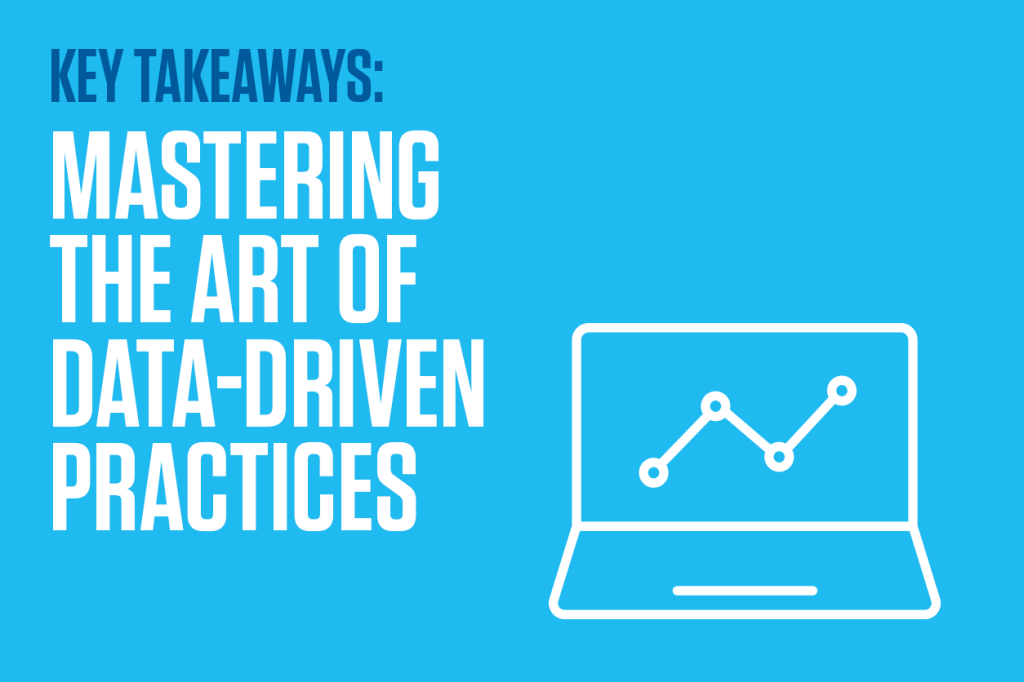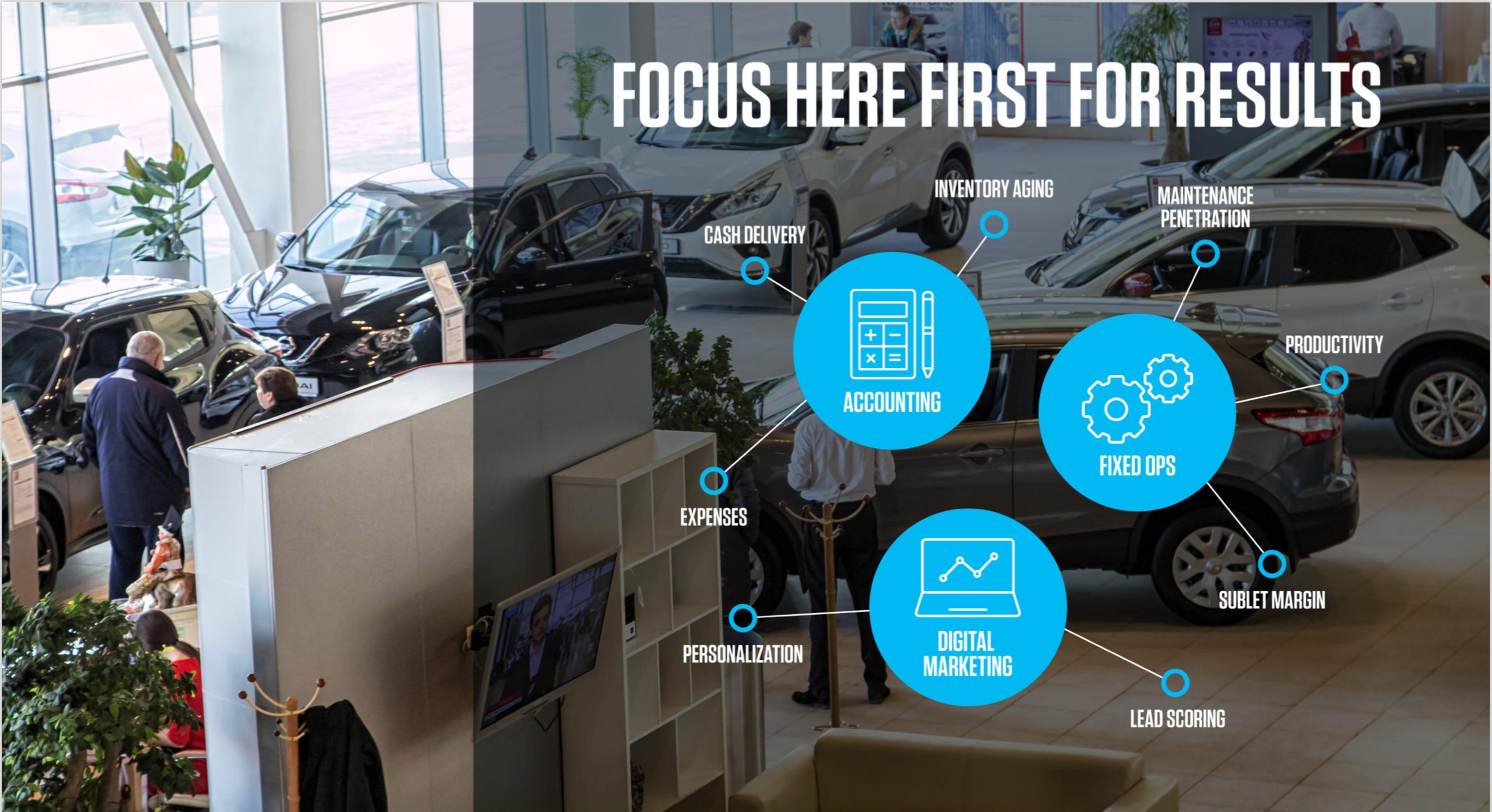Is more data always better when it comes to financial reporting? While dealerships certainly want visibility into what is happening in their operations every month, amassing lots of data points from every department is fruitless if you don’t know which numbers matter the most.
Often, dealerships try to diagnose what’s happening within their business by implementing custom report builders that are not built for the specific needs of the vehicle sales and service industry. These builders require the assistance of outside programmers to build and customize the solution, ongoing maintenance to keep up with changes introduced during software upgrades and patches, and alterations as business operations evolve.
After all that effort, most dealerships end up running the same set of reports every month, but they may not be using them to uncover opportunities for improvement that can make a real difference for the success of the business.
A better approach to financial reporting focuses on specific key performance indicators (KPIs) that can guide dealerships toward improved operations and profitability. The first step is gaining an understanding of which KPIs enable critical analysis of financial results, and how to uncover improvement opportunities in the findings.
Less work, more value
For dealers, the ideal financial reporting solution would do most of the heavy lifting to enable meaningful analysis of data by providing dashboards and reports that offer a holistic view of information from multiple departments across all stores. Managers would be able to drill down into data as needed to explore operations from multiple perspectives without chasing down input from every store.
To get accurate views of how new vehicle, used vehicle, and service and parts departments contribute to the profitability of the business, dealers need:
● Flexible reporting modules for every department in the store
● A view of data across all dealerships in a dealer group
● The ability to easily filter, group, and segment the data with a few clicks to answer any question
● A clear understanding of the KPIs that matter to the critical analysis of how the business is performing
The KPIs that matter
Every dealership is striving to increase gross profit by maximizing revenues and controlling expenses. While there are lots of things to measure and monitor throughout each department, there are three essential KPIs that every dealer should evaluate regularly. Effectively managing these reports can immediately drive better results for the overall success of the business.
1. Contracts in Transit
The faster dealers can move assets to cash, the healthier the dealership. Karli DeVall, a corporate controller for Tim Dahle & Red Rock Auto Groups, knows how important cash flow is for her business.
“It’s all about the cash for me,” said DeVall. “I want to be able to measure contracts in transit and get the average days delivery to cash, not just for the store, but for specific finance managers, lenders, and sales managers, so we can figure out who is delaying the process.”
DeVall wants to be able to assess KPIs on a weekly and monthly basis to measure how teams are progressing.
“If the executive team is only talking about performance every six months, it’s hard to move the needle,” said DeVall.
2. Sales to Accounting Reconciliation
Current reporting options generally only provide controllers with access to what’s happening in the finance office and accounting in separate reports that are generated from different parts of the DMS. The results rarely, if ever, match. The monthly process of reconciling every posted vehicle deal requires a time-consuming manual audit to determine if there are reporting discrepancies.
A better approach is to see all deals in one report that lists information from both departments as well as any differences.
For example, imagine a dealer has 18 deals on the books but has a discrepancy between the gross in the business office of $60,000 and the gross in the accounting records of $74,000. Currently, figuring out which deals are still hanging, and why, requires a lot of manual investigation.
A holistic view of every deal (including capped and uncapped deals) reveals the status of deals with banks, chargebacks, and other issues that can hold up finalization. With that information, F&I managers can take action to fix discrepancies, push financing decisions, and finalize every deal in a fraction of the time.
A clear view of deal flow also enables analysis of the performance of individual F&I managers in terms of cash collection. This data can be used to inspire competition between managers, increase efficiency, and close performance gaps by enabling informed coaching conversations.
3. Income Statement
For dealerships that operate multiple stores, providing the ability to map each individual chart of accounts to a standard, holistic view of the performance of the entire auto group enables critical financial analysis.
The process should be automated so managers and controllers have access to the information as soon as the books close. Without an in-depth reporting tool, dealers burn a lot of time putting each individual store’s report into one consolidated Excel sheet. Custom segmentation of data, for comparing metrics of smaller subsets of the overall group, can take days to configure.
For example, to get a consolidated view of what’s happening in her auto group, DeVall must pull data together manually from multiple general ledgers, as well as the business office, and inventory reports — and then spend a considerable amount of time formatting the results to make them usable and presentable.
She observed that it would be valuable to be able to easily group data however she wants, so she could figure out group performance and provide actionable recommendations based on KPIs. For example, how are the Nissan dealerships in the group performing? How can we compare high-volume stores on an equal standard with lower-volume stores? What data can we provide for managers to drive next month’s performance?
“When you set goals and then give managers the information they need to track those goals and be accountable, all of a sudden people start moving and things get progressively better than when you weren’t talking about them,” said DeVall.
Finding the right balance
These three KPIs are the starting point for the types of data dealerships should track when implementing a better approach to financial reporting. It’s a smart way to identify and narrow the data that’s valuable, from the entire universe of a dealership’s operations.
Want to learn more? Click here to download key takeaways from our on-demand webinar, “Mastering the Art of Data-driven Practices,” to learn more about the steps that can help you maximize the power of your data for improved results.






